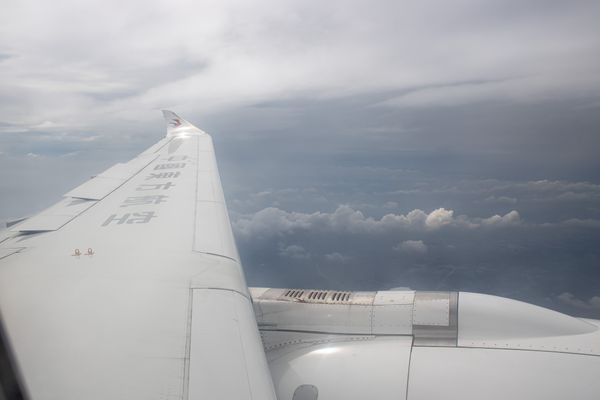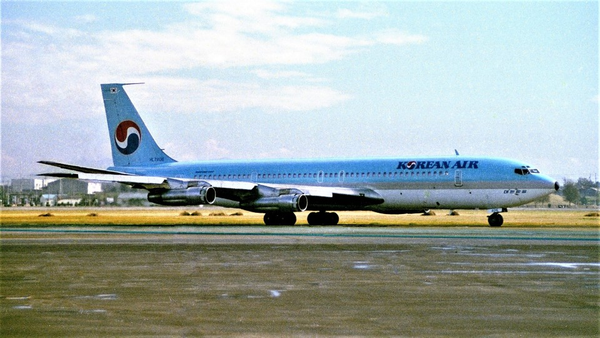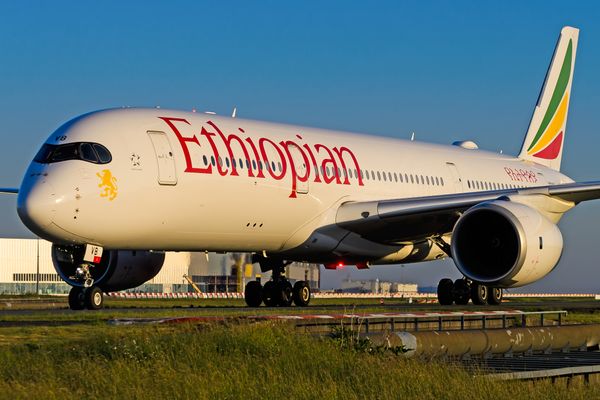Due to a flap malfunction, Ryanair flight FR 3945, operated with a Boeing 737-800, diverted to London-Gatwick (LGW) instead of its intended destination, Bournemouth (BOH).

The Incident
A technical issue involving the aircraft's flaps forced FR 3945 from Faro (FAO) to Bournemouth to divert to Gatwick on February 26. Roy Brice, a flight passenger, said he first heard the plane and then observed it circling to Bournemouth airport and heading towards New Forest. He then utilized an app to track the plane's sudden diversion.
Roy stated: "It was the most incredible noise that shook through the house. The plane was not much more than 500ft from the ground, and it was dropping all the time I was watching it." According to him, the plane tracking app showed 10 emergency vehicles were waiting on the Gatwick (LGW) runway when the plane landed.

The Flight
The flight departed from Faro at 7:20 p.m. local time before heading to Bournemouth's Hurn airport. While approaching the destination, the aircraft started a go-around and proceeded immediately to London Gatwick for emergency purposes. FR 3945 landed safely at 10:49 p.m. local time.
The issue has been reported as a problem considering the aircraft's flaps. The flap issue causes the pilots operating on the plane to have limited drag to reach their optimal landing speed since flaps are crucial for controlling speed and angle during landing. The landing speeds are determined before the arrival with specific configurations on the aircraft to achieve them. When there is a high-speed approach, the plane would require more runway space so it has enough to attain a stop safely.

In this case, pilots would not have enough runway length to actualize the landing on Bournemouth because a high-speed approach would be required. Because of the limitations the emergency caused, the plane landed safely at London Gatwick, which provides a wider margin for a secure landing under compromised conditions.
A Ryanair spokesperson said:
"This flight from Faro to Bournemouth (26 Feb) diverted to Gatwick due to a minor technical issue with the aircraft. The aircraft landed normally at Gatwick and was inspected by engineers who cleared the aircraft to return to service later the same day."

Another Emergency Landing
Pilots of an EasyJet flight from Funchal, Portugal, to London-Gatwick reported an emergency landing for flight U28522 mid-flight due to "smoke throughout the cabin." The incident also occurred on February 26. The aircraft involved was G-EJCD, an almost 15-year-old Airbus A320. U28522 departed from Madeira at 7:14 p.m. local time, and during the descent to London, Gatwick declared an emergency, requesting a priority landing. The aircraft landed in Gatwick at 11:20 p.m. local time.
It is unclear where the smoke began in the aircraft, but an emergency landing was required. It is because the problem is the immediate threat of smoke inhalation to the passengers onboard. As a result, both planes achieved to prioritize the passengers' health and accomplish emergency needs as professionals operating the duty.
IndiGo Unveils Delhi–London Expansion and First A321XLR Launch » Mexican Medical Plane Crashes in Galveston Bay During Rescue Mission » End of an Era: JetBlue's Farewell to the Embraer E190 »
Comments (0)
Add Your Comment
SHARE
TAGS
NEWS Ryanair Ireland EasyJet Emergency Incident London United Kingdom UK Boeing 737-800 SafetyRECENTLY PUBLISHED
 VIDEO: What It's Like Onboard China's COMAC C919
We flew onboard China Eastern's COMAC C919 to experience China's homegrown narrow-body up close. From seat comfort to cabin layout to noise levels to tech: how does it really compare with the Boeing 737 and Airbus A320? This review puts all three workhorses under the same spotlight.
TRIP REPORTS
READ MORE »
VIDEO: What It's Like Onboard China's COMAC C919
We flew onboard China Eastern's COMAC C919 to experience China's homegrown narrow-body up close. From seat comfort to cabin layout to noise levels to tech: how does it really compare with the Boeing 737 and Airbus A320? This review puts all three workhorses under the same spotlight.
TRIP REPORTS
READ MORE »
 KAL858: The North Korean Bombing that Shocked the World
Among the 99 passengers boarding Korean Air Flight 858 on November 29, 1987, few could imagine their journey would end as one of aviation's darkest mysteries.
STORIES
READ MORE »
KAL858: The North Korean Bombing that Shocked the World
Among the 99 passengers boarding Korean Air Flight 858 on November 29, 1987, few could imagine their journey would end as one of aviation's darkest mysteries.
STORIES
READ MORE »
 Ghost Networks: The Rise, Fall, and Revival of Fifth-Freedom Flights
Fifth-freedom flights — routes where an airline flies between two countries outside its home base — have always lived in aviation's twilight zone. We chart their rise, their near-disappearance, and the surprising markets where they still thrive today. Then we take you on board a special Seoul-Tokyo fifth-freedom flight to show how the experience stacks up against a typical regional carrier.
TRIP REPORTS
READ MORE »
Ghost Networks: The Rise, Fall, and Revival of Fifth-Freedom Flights
Fifth-freedom flights — routes where an airline flies between two countries outside its home base — have always lived in aviation's twilight zone. We chart their rise, their near-disappearance, and the surprising markets where they still thrive today. Then we take you on board a special Seoul-Tokyo fifth-freedom flight to show how the experience stacks up against a typical regional carrier.
TRIP REPORTS
READ MORE »



